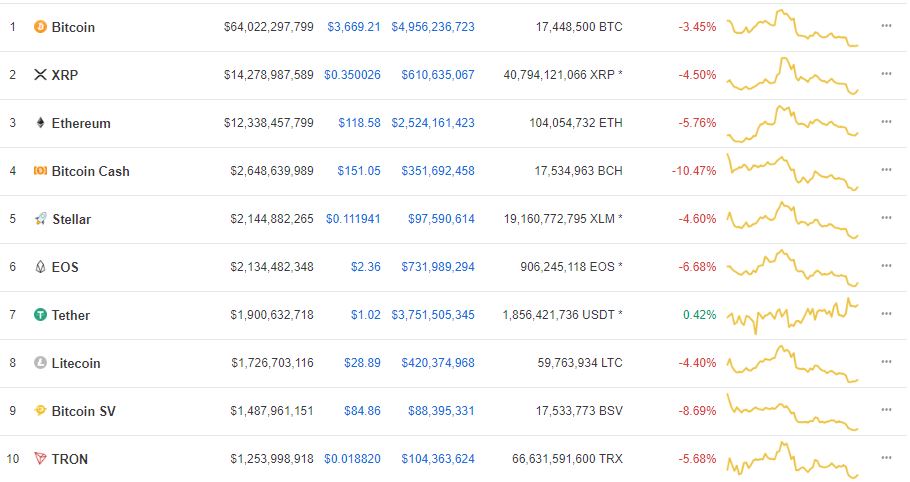2021-9-20 16:00 |
This year so far has seen an incredible resurgence for crypto and the entire blockchain industry. With it, the pressure to launch a token has returned.
Cryptocurrency markets started the year powered by the growing public interest in Non-Fungible Tokens (NFTs). That momentum continued with the growing adoption and popularity of Decentralized Finance (DeFi) products amongst the blockchain community.
Initial Coin Offerings (ICOs) have picked up the pace again. Well over 300 ICOs conducted so far during this year.
As interest and capital continue to pour into the industry, more projects are likely feeling the pressure of launching an ICO. In addition, they are finding ways to introduce a token to the world to raise funds to carry a project forward.
As the public excitedly awaits the “next big ICO,” it is important for investors and companies to understand that not all ICOs are equal.
While it may be obvious for most, this requires understanding that the inequality extends beyond the legitimacy and potential of the underlying project. What may not be regularly considered amongst token buyers in an ICO (or through general investing) is the utility of the token itself.
For token holders, a belief that a successful project equates to an eventual rise in the token’s value. However, this is often met with the harsh reality that such ties are not as linear as initially expected.
Several years after the 2017 ICO mania, there are clear examples today of successful crypto projects which have not been able to transfer that same level of success into the price of their token. But why? And how could this happen?
Bad tokenomics can undermine good projectsIt may help to first define “token failure.” For the purposes of this article, token failure is the event where a project has issued a token that has little to no demand, use case, and utility.
As it stands, these tokens simply exist. They are held principally by the project and speculators who hope the commercial success and increased popularity of a project will translate into rising demand. In turn, the price of the underlying token will appreciate.
Explaining tokenomicsIt is also helpful to have a baseline understanding of the concept of tokenomics. Firstly, it is simply a mashup of two words – token and economics.
In the cryptosphere, tokens can be treated as another word for cryptocurrency or crypto assets. They represent any crypto that isn’t bitcoin or ether.
On the other hand, economics can generally be referred to as how society utilizes its limited resources to produce, distribute, and consume goods and services.
Tokenomics is how the participants of a particular blockchain use the underlying token to power the distribution and consumption of goods and services related to that chain. It is in this area that many projects fail after the issuance of a token.
Ultimately, the lack of a proper definition of how a token can be used to support the economy on the underlying blockchain leads to the inevitable question of how the token itself is even relevant. Without utility defined, what exactly is its purpose?
How it can go wrongSeveral years ago, a provider of blockchain security solutions came under fire from its token holders. They felt misled by the company regarding its issued token.
During this time, the project failed to clarify the types of payments accepted from its customers. That is, whether or not the project requires that customers use its issued tokens for payment or if fiat, BTC, or ETH was an acceptable alternative.
Eventually, the company did admit that customers did not need to hold or pay in their issued token to receive services. This is in contradiction to what the company previously communicated.
Without this requirement to hold the project’s native token, its utility became questionable. Customers and users no longer had any incentive to hold on to such a token.
Despite these issues early on, the project continued to grow. Today, it works with several leading projects in the crypto space and continues to take on high-profile clients.
However, its token price has plummeted and now trades for pennies on the dollar. The token is now a shadow of the former glory it once promised.
These days, the project continues without any mention of the token. It no longer appears to play a significant (or any) role in its ongoing business model.
Despite this, the company continues to find commercial success, growing in size, popularity, and product adoption.
While this continued success is great for the project, its token holders have continued to suffer. Worse yet, the project is left with digital assets which are not being fully leveraged. Thereby missing further opportunities for growth and adoption.
But it doesn’t have to be this way – how did this project (and so many others) get here. In addition, knowing this, how can they get out?
Injecting utility into a tokenQuite simply, despite the token stage (pre or post-ICO), projects need to ensure a proper design of their token economy.
This means designing a token ecosystem where token holders are incentivized to hold the project token for reasons unrelated to price speculation.
Token economies, which are designed such that token holders can utilize tokens for the purchase and sale of goods and services, or for earning residual income (like interest), are the ones that will find have a higher probability of success in terms of adoption and price appreciation.
As stated previously, the issue with many token economies is that the project token ultimately serves no purpose.
At best, there are times where the project may force its users to purchase its tokens before providing its goods and services.
However, such a model doesn’t incentivize users to hold the tokens either. Instead, it creates an irritating intermediary step that users must jump through each time they want to consume a particular solution.
Many individuals may remember that as children, they joined their friends or family in attending a carnival or city fair.
These events often required participants to purchase tickets before entering. Once inside, the ticket economy dictated the type of experience that the ticket holder would have. Ferris wheel ride? Two tickets. Slice of pizza? Five tickets. Dart throwing? Four tickets.
These tickets functioned well within the system, but upon leaving the carnival, they lost all value. In the crypto world, the blockchain is the carnival, and the tickets are its tokens.
How will a project design their economy such that its participants will perpetually enjoy their time at the fair?
Designing (or redesigning) token economic modelsOne promising way of increasing token utility and encouraging the holding of tokens is through a blockchain subscription model.
Such a model would require projects to define utility for their tokens. They would also have to assign a lifetime value of that utility for each token. In addition, they would then create an economy such that holders of those tokens would be able to consume the good or service defined against that token across the lifetime value defined.
Unpacking an exampleAs an example, suppose a video game producer already sells monthly subscriptions to its player base to access various online worlds. In the fiat system, these subscriptions bill users monthly. Auto deductions occur on the credit card stored with the provider.
Under a blockchain subscription, the game producer could hypothetically release a token with a lifetime value of one year. This allows the token holder to access its online worlds for a maximum of eight hours per day.
Players would be incentivized to hold this token for its entire life. That is assuming they are interested in playing the game for the entire year.
Under the same scenario, suppose that a token holder knows that due to upcoming personal commitments, they will not be able to play the game as frequently as usual.
The token holder could potentially find a way to rent their token out to the community. Thereby earning fees (interest) during the time which they are not able to take advantage of its utility.
Funds made during this period could be re-invested back into the game community or token economy. Thus further strengthening the token economic model.
An example of such a protocol is the IQ Protocol. It is the ultimate “plug and play” tokenomics model. It allows any project to easily update its solution offerings into a blockchain subscription-based model.
Leveraging the real value of cryptoToken economics is complex. Projects have to worry about the number of tokens to issue, burn rate, and the amounts to set aside for various groups and individuals involved in the project. In addition, arguably, the biggest challenge is defining a solid purpose and use case for the token.
With the pace of ICOs increasing and rising interest in the blockchain and crypto, projects should look into their current token economic models. Then assess whether or not their tokens are truly providing any utility to the participants in its ecosystem.
Without utility, not only will token prices likely fall, but the project will be dismissing one of its best assets to market and bring value to an existing solution.
The post Crypto Tokenomics – Understanding the Real Value of Crypto appeared first on BeInCrypto.
origin »Emerald Crypto (EMD) на Currencies.ru
|
|
















